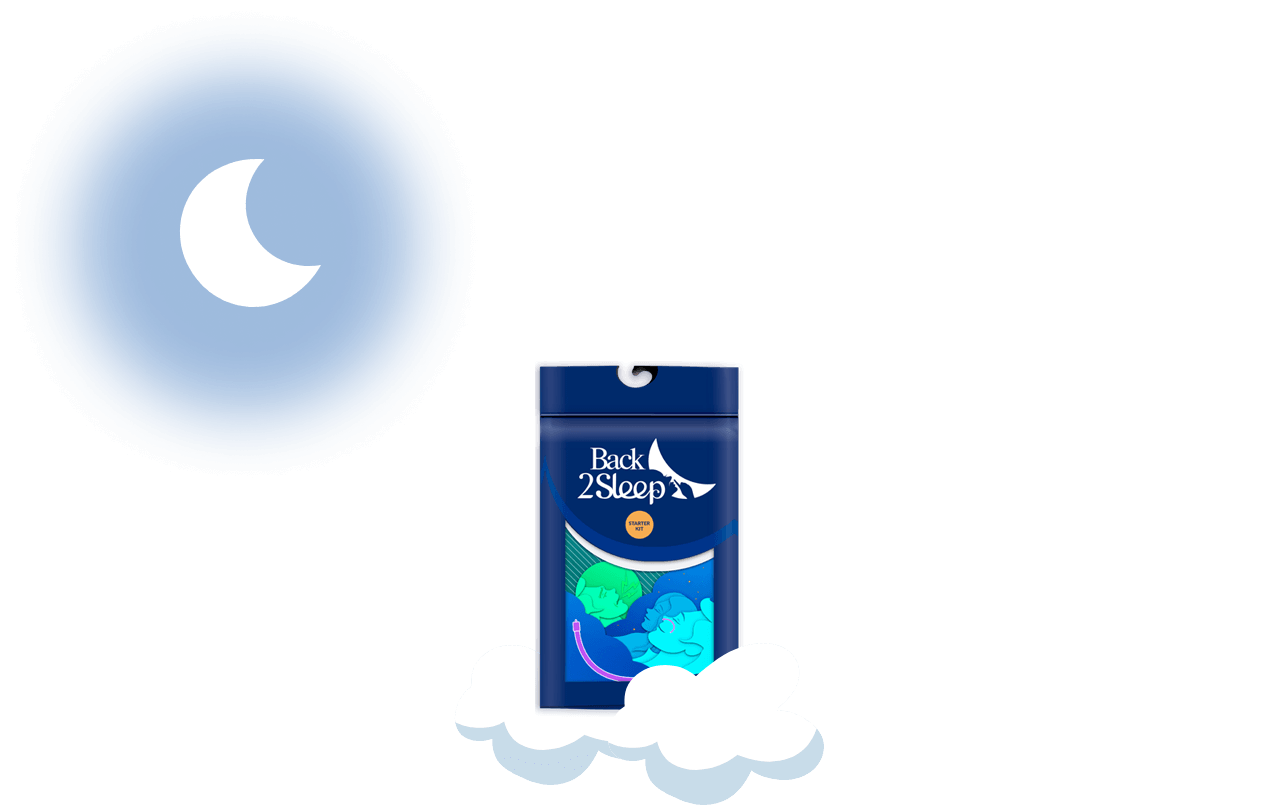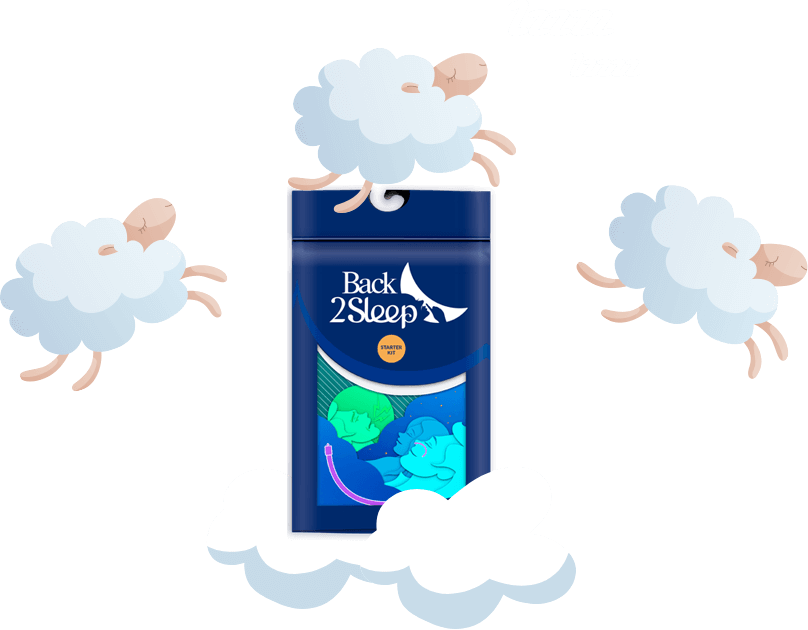Understanding Obstructive Sleep Apnea Syndrome (OSAS): Complete Guide to Diagnosis, Symptoms & Treatment
Discover everything about OSAS—from recognizing the warning signs to effective treatment solutions that can transform your sleep and save your life
"Free yourself and regain your peaceful nights with Back2Sleep"
Obstructive Sleep Apnea Syndrome (OSAS) affects millions worldwide yet remains dramatically underdiagnosed—studies show that 80% of Americans with this life-threatening condition don't even know they have it. If you wake up exhausted despite sleeping a full night, experience severe snoring that disturbs your partner, or find yourself dangerously drowsy during the day, you may be among the undiagnosed millions suffering from OSAS. This comprehensive guide explores everything you need to know: the underlying mechanisms causing airway collapse, recognizable symptoms that demand attention, accurate diagnostic procedures, and most importantly, innovative treatment solutions including the revolutionary Back2Sleep nasal stent that offers freedom from cumbersome CPAP machines. A good night's sleep isn't just crucial for well-being—it's essential for survival, and understanding OSAS is your first step toward reclaiming restorative rest.

Critical Statistics: Nearly 2-5% of the adult population suffers from OSAS, with prevalence rates reaching 24% in middle-aged men and 9% in women. Without treatment, this condition can lead to potentially fatal cardiovascular complications, stroke, and sudden death during sleep.
The Hidden Epidemic: OSAS By The Numbers
The prevalence of OSAS continues rising globally, driven primarily by increasing obesity rates. Current estimates suggest 10% of adults experience mild OSA, 3.8% moderate OSA, and 6.5% severe OSA. Among obese individuals, the risk skyrockets—with 55-90% of severely obese people suffering from sleep apnea.
What is Obstructive Sleep Apnea Syndrome? Understanding the Disorder

Obstructive Sleep Apnea Syndrome is a serious nighttime breathing disorder characterized by repetitive episodes of complete or partial upper airway obstruction during sleep. Unlike simple snoring, OSAS involves actual cessations of breathing—termed "apneas"—or significant reductions in airflow called "hypopneas." These events occur when throat muscles relax excessively during sleep, causing the soft tissues in your upper airway (particularly the oropharynx and hypopharynx) to collapse and block the passage of air.
The Physiological Mechanism
During normal sleep, your body maintains muscle tone sufficient to keep airways open despite natural relaxation. In OSAS, however, critical anatomical vulnerabilities combined with muscular dysfunction create conditions where your airway repeatedly narrows or completely collapses. This obstruction triggers a cascade of dangerous physiological responses:
Important Distinction: OSAS differs from Central Sleep Apnea (CSA), where breathing stops due to lack of respiratory effort rather than physical obstruction. OSAS involves continued or even increased breathing effort against a collapsed airway—your body tries desperately to breathe but simply can't move air past the blockage.
The "3 S's" Diagnostic Mnemonic
Medical professionals use an easy-to-remember mnemonic to identify OSAS candidates—the Three S's:
Snoring + Sleepiness + Significant-other report = OSAS suspicion
Recognizing the Symptoms: Day and Night Warning Signs
Individuals with OSAS experience a wide spectrum of symptoms that dramatically impair quality of life. Crucially, symptoms differ between nighttime and daytime, providing diagnostic clues:
Nighttime Symptoms (During Sleep)
🔊 Severe Snoring
Present in up to 95% of OSAS cases—loud, disruptive snoring that disturbs household members. Often described as sounding like "walls shaking" or "earth rumbling."
😱 Witnessed Apneas
Partners observe frightening episodes where breathing completely stops, followed by gasping, choking, or desperate air-gulping as breathing resumes.
💤 Restless Sleep
Frequent awakenings, tossing and turning, sudden starts with feelings of choking or suffocation that jolt you from sleep repeatedly.
🚽 Nocturia
Multiple nighttime trips to urinate (3+ times per night), caused by hormonal changes triggered by oxygen desaturation and cardiovascular stress.
Daytime Symptoms (Waking Hours)
The fragmented, non-restorative sleep caused by OSAS creates debilitating daytime consequences:
Dangerous Consequence: OSAS increases motor vehicle accident risk by 2-3 times due to excessive daytime sleepiness. Untreated severe OSAS poses similar crash risks to drunk driving. Treatment with CPAP or alternative devices can significantly reduce this risk.
What Causes Obstructive Sleep Apnea Syndrome? Risk Factors Explained

Understanding the root causes of OSAS is essential for effective prevention and treatment. Multiple overlapping factors contribute to airway collapse, varying significantly between individuals:
Primary Risk Factors
Anatomical and Structural Factors
Certain physical characteristics predispose individuals to airway obstruction:
Medical Conditions Increasing OSAS Risk
Several health conditions bidirectionally relate to OSAS—they both contribute to and result from sleep apnea:
- Type 2 Diabetes: Insulin resistance and metabolic dysfunction both cause and result from OSAS through complex inflammatory mechanisms.
- Hypertension: Over 50% of OSAS patients have high blood pressure; nighttime oxygen drops trigger sympathetic nervous system activation.
- Heart Failure & Arrhythmias: Cardiac conditions worsen OSAS, while OSAS progression accelerates cardiovascular disease.
- Endocrine Disorders: Hypothyroidism, acromegaly, Cushing syndrome, and polycystic ovary syndrome all increase OSAS likelihood.
- Stroke History: Previous cerebrovascular events both increase vulnerability to OSAS and worsen with untreated sleep apnea.
Critical Insight: Even non-obese individuals develop OSAS (20-25% of cases). These patients face 4 times higher hypertension risk and 2.7 times greater early atherosclerosis risk compared to obese patients without OSA, making early identification crucial.
Life-Threatening Consequences: Why OSAS Demands Urgent Treatment

Untreated OSAS carries severe, potentially fatal health consequences. The intermittent hypoxia (oxygen deprivation), sleep fragmentation, and cardiovascular stress create a perfect storm for systemic disease. Research demonstrates significantly increased mortality in patients with untreated moderate-to-severe sleep apnea compared to healthy controls.
Cardiovascular Complications
OSAS dramatically impacts heart health through multiple destructive mechanisms:
💔 Hypertension
Drug-resistant high blood pressure affects over 50% of OSAS patients. Repeated oxygen drops trigger sympathetic nervous system overdrive, elevating blood pressure chronically.
🫀 Heart Attack Risk
Ischemic heart disease and myocardial infarction rates soar with untreated OSAS due to increased oxidative stress, inflammation, and atherosclerosis acceleration.
⚡ Arrhythmias
Atrial fibrillation and other dangerous heart rhythm disorders occur more frequently, triggered by oxygen fluctuations and autonomic nervous system disruption.
🧠 Stroke
Cerebrovascular events increase dramatically with OSAS severity. Untreated severe OSA raises stroke risk comparably to major modifiable risk factors.
Metabolic and Endocrine Disruption
Beyond cardiovascular damage, OSAS wreaks havoc on metabolic health:
Neurological and Cognitive Effects
The brain suffers tremendously from repetitive nocturnal hypoxia:
- Cognitive Impairment: Executive function, memory consolidation, and decision-making abilities deteriorate progressively with untreated OSAS.
- Mood Disorders: Depression and anxiety occur at rates 2-3 times higher in OSAS patients, related to both sleep disruption and neurotransmitter dysfunction.
- Dementia Risk: Emerging evidence links chronic sleep apnea to accelerated cognitive decline and increased Alzheimer's disease risk in older adults.
Mortality Impact: Severe untreated OSAS (AHI >30) significantly increases all-cause mortality. Studies demonstrate survival rates dramatically improve with effective treatment, particularly CPAP therapy or alternative solutions like Back2Sleep.
How is OSAS Diagnosed? Complete Testing Procedures
Accurate OSAS diagnosis requires comprehensive sleep evaluation, not merely symptom assessment. The diagnostic process involves two critical phases:
Phase 1: Clinical Evaluation
Medical History
Detailed questioning about sleep patterns, snoring history, daytime symptoms, and bedpartner observations.
Physical Examination
ENT specialist examines airways for structural abnormalities, enlarged tonsils, deviated septum, or small jaw.
Risk Assessment
Measurement of BMI, neck circumference, blood pressure evaluation, and assessment of comorbid conditions like diabetes.
Phase 2: Sleep Study (Polysomnography)
The gold standard for OSAS diagnosis involves overnight monitoring of multiple physiological parameters. Two main approaches exist:
In-Laboratory Polysomnography (PSG)
Comprehensive sleep study conducted in a sleep center, recording:
Home Sleep Apnea Testing (HSAT)
Simplified portable monitoring performed in your own bedroom, measuring respiratory parameters without full brain monitoring. Less expensive and more convenient but provides limited data compared to in-lab PSG.
Understanding Your Results: The AHI Score
The Apnea-Hypopnea Index (AHI) serves as the primary metric for diagnosing and classifying OSAS severity. This index represents the average number of apneas and hypopneas occurring per hour of sleep:
| AHI Score | Classification | Clinical Significance | Treatment Urgency |
|---|---|---|---|
| < 5 events/hour | Normal / No OSA | Within normal limits; no sleep apnea present | No treatment needed |
| 5-15 events/hour | Mild OSAS | Symptomatic patients should consider treatment; increased cardiovascular risk | Treatment if symptoms present |
| 15-30 events/hour | Moderate OSAS | Significant health risks; treatment strongly recommended regardless of symptoms | Treatment recommended |
| > 30 events/hour | Severe OSAS | Major cardiovascular and mortality risks; immediate treatment essential | Urgent treatment required |
Important Note: AHI alone doesn't tell the complete story. Doctors also consider symptom severity, oxygen desaturation levels, arousal frequency, and presence of cardiovascular comorbidities when making treatment decisions. Two patients with identical AHI scores may require different management approaches.
Additional Diagnostic Metrics
Beyond AHI, sleep specialists evaluate:
- Respiratory Disturbance Index (RDI): Includes respiratory effort-related arousals (RERAs) alongside apneas and hypopneas, providing more comprehensive assessment.
- Oxygen Desaturation Index (ODI): Counts oxygen drops of ≥3-4% per hour, indicating severity of hypoxic episodes.
- Lowest Oxygen Saturation: The nadir SpO2 level reached during sleep; values below 80% indicate severe desaturation.
- Sleep Architecture: Analysis of time spent in each sleep stage; OSAS typically reduces REM and deep sleep percentages.
Effective Treatment Solutions: From CPAP to Innovative Alternatives
Modern OSAS management offers multiple evidence-based treatment options, allowing personalized approaches based on severity, anatomy, lifestyle, and patient preferences. The key is finding a solution you'll actually use consistently—adherence determines success.

Gold Standard: Positive Airway Pressure (PAP) Therapy
Continuous Positive Airway Pressure (CPAP) remains the first-line treatment for moderate-to-severe OSAS. CPAP delivers constant pressurized air through a mask, creating a pneumatic splint that prevents airway collapse:
Alternative PAP modes include Auto-CPAP (automatically adjusts pressure) and BiPAP (different pressures for inhalation/exhalation) for patients requiring customization.
Revolutionary Alternative: Back2Sleep Nasal Stent
For patients seeking freedom from bulky CPAP masks, the Back2Sleep nasal stent offers an innovative, clinically-proven solution. This CE-certified medical device provides effective treatment for mild-to-moderate OSAS and severe snoring without electricity, masks, or complex setup.
🌙 Effortless Use
Insert the soft silicone stent in seconds before bed—no machines, no masks, no maintenance beyond simple 2-minute cleaning.
🎯 Direct Mechanism
The stent reaches your soft palate, physically preventing airway collapse at the source of obstruction while you sleep naturally.
✈️ Travel Freedom
Compact and portable—fits easily in luggage. No power needed. Perfect for frequent travelers who struggle with CPAP on the road.
🤐 Silent & Discrete
Completely invisible and silent. Partners sleep peacefully without machine noise. Social confidence restored for sleepovers and travel.
Clinical Evidence: Back2Sleep demonstrates over 92% user satisfaction with immediate results from night one. More than 1 million units sold worldwide since launch, with consistent 4.8/5 average ratings across verified purchaser reviews.
Back2Sleep Product Options
| Product | Price | Contents | Best For |
|---|---|---|---|
| Starter Kit | €39 | 4 sizes (S, M, L, XL), lubricant, manual - 15-night trial | First-time users finding optimal fit |
| Individual Box | €39 | 2 stents (chosen size), lubricant, manual - 1 month supply | Users who know their size |
| Monthly Subscription | €35/month | 2 stents monthly + free delivery | Convenient automatic replenishment |
| Annual Subscription | €299/year | 12 monthly deliveries (€24.91 each) | Best value for committed long-term users |

How to Use Back2Sleep Products
Select Size
Try all sizes in Starter Kit to identify perfect fit. Most users find their ideal size within 3-5 nights.
Apply Lubricant
Use provided water-based gel on stent tip for comfortable, smooth insertion into nostril.
Insert & Sleep
Gently guide stent into one nostril before bed. Breathe normally and enjoy peaceful, restorative sleep.
Clean Daily
Remove upon waking, wash with mild soap and water (2 minutes). Replace stent every 15 days.
Additional Treatment Options
Life-Changing Results: Real Patient Experiences
"My wife was ready to move to a separate room because my snoring was unbearable. After using Back2Sleep for just one week, she actually thanked me! The difference is night and day."
"I travel constantly for work and CPAP was impossible to manage. Back2Sleep fits in my pocket and works perfectly on planes, hotels, anywhere. My energy levels have completely transformed."
"My AHI was 27 and I used CPAP for years but hated it. Switched to Back2Sleep six months ago—my latest sleep study showed AHI dropped to 12. Finally sleeping comfortably!"
"Since its launch in June 2017, the press regularly quotes Back2Sleep (formerly Nastent™) and its benefits."
Lifestyle Modifications: Optimizing Treatment Success
While medical devices and therapies form the cornerstone of OSAS treatment, behavioral changes significantly enhance outcomes and, in mild cases, may provide sufficient improvement alone:
Weight Management Strategy
For overweight or obese patients, weight reduction represents the most impactful lifestyle modification. Research demonstrates that:
- 10% weight loss predicts approximately 26% decrease in AHI scores
- Significant weight reduction can completely resolve mild OSAS in some individuals
- Even modest loss improves CPAP adherence by reducing required pressure settings
- Comprehensive programs combining diet, exercise, and behavioral counseling achieve best results
Sleep Position Optimization
Position-dependent OSA affects a substantial proportion of patients whose AHI increases dramatically when sleeping supine (on back). Strategies include:
Substance Avoidance
Certain substances worsen OSAS severity and must be limited or eliminated:
- Alcohol: Relaxes throat muscles excessively, increasing collapse frequency and duration. Avoid 3+ hours before bed.
- Sedatives & Sleep Aids: Benzodiazepines, barbiturates, and many sleep medications suppress respiratory drive and worsen apnea.
- Smoking Cessation: Tobacco increases upper airway inflammation and fluid accumulation. Quitting reduces OSAS severity within months.
- Muscle Relaxants: Medications causing muscle relaxation can exacerbate airway collapse during sleep.
Sleep Hygiene Fundamentals
Establishing healthy sleep habits optimizes treatment effectiveness:
Ready to Reclaim Your Peaceful Nights?
Join over 1 million people worldwide who've transformed their sleep with Back2Sleep's innovative nasal stent—the comfortable, effective alternative to CPAP.
Get Started Today - €39✓ 92% satisfaction rate ✓ Results from night one ✓ 15-day money-back guarantee
Take Control: Your Path to Better Sleep Starts Now
Obstructive Sleep Apnea Syndrome is serious, common, and treatable. Whether you're experiencing the first warning signs or have struggled with OSAS for years, understanding this condition empowers you to seek appropriate care and find solutions that genuinely work for your lifestyle.
The evidence is clear: untreated OSAS destroys quality of life and significantly increases risks of life-threatening cardiovascular events, stroke, and premature death. But the opposite is equally true—effective treatment transforms lives, restoring energy, mental clarity, relationship harmony, and protecting long-term health.
For those seeking freedom from cumbersome CPAP machines, the Back2Sleep nasal stent offers a clinically-proven, user-friendly alternative. With over 92% satisfaction rates, immediate results, and the convenience of silent, portable, electricity-free operation, Back2Sleep bridges the gap between struggling with OSAS and embracing restorative sleep.
Your Next Steps: If you suspect OSAS, schedule a consultation with a sleep specialist for proper diagnosis. For mild-to-moderate cases or CPAP intolerance, try the Back2Sleep Starter Kit risk-free for 15 nights. Remember: every night of untreated sleep apnea damages your health further—take action today.
"Invest in your sleep and enjoy peaceful, healthy nights!"








